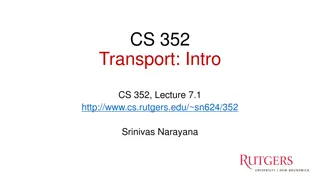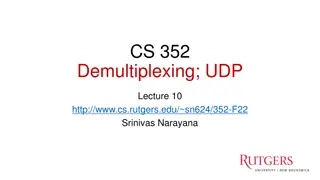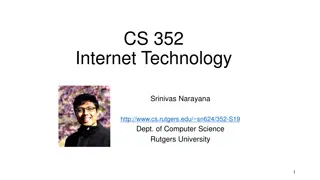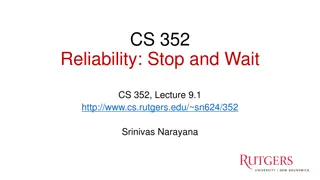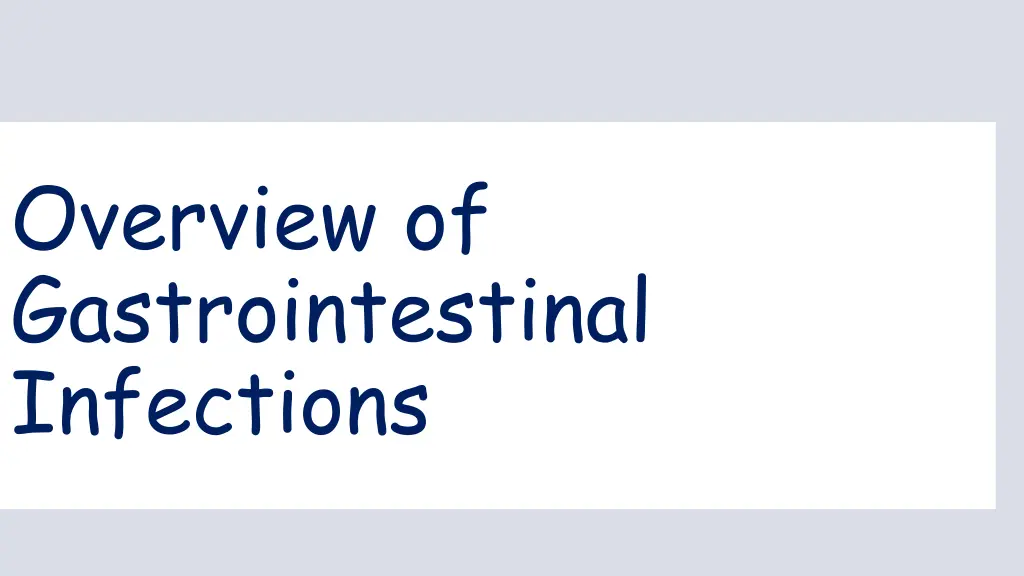
Understanding Gastrointestinal Infections and Diarrheal Diseases
Explore the world of gastrointestinal infections, including types of diarrheal diseases, infectious agents of acute diarrhea, and the role of resident microbial flora in the human gastrointestinal tract. Learn about common pathogens causing acute diarrhea and their pathogenic mechanisms, along with gastrointestinal infective syndromes such as dysentery, traveler's diarrhea, and more. Delve into the definition of diarrhea, its causes, and infectious agents associated with acute diarrhea. Enhance your knowledge and understanding of gastrointestinal health.
Download Presentation

Please find below an Image/Link to download the presentation.
The content on the website is provided AS IS for your information and personal use only. It may not be sold, licensed, or shared on other websites without obtaining consent from the author. If you encounter any issues during the download, it is possible that the publisher has removed the file from their server.
You are allowed to download the files provided on this website for personal or commercial use, subject to the condition that they are used lawfully. All files are the property of their respective owners.
The content on the website is provided AS IS for your information and personal use only. It may not be sold, licensed, or shared on other websites without obtaining consent from the author.
E N D
Presentation Transcript
Overview of Gastrointestinal Infections
Learning objectives At the end of the session, the students will be able to understand: Types of diarrheal diseases. Infections agents of acute diarrhea and the underlying mechanism. Identification features/ detection methods of common organisms causing acute diarrhea or dysentery and their pathogenic mechanisms
RESIDENT MICROBIAL FLORA
RESIDENT MICROBIAL FLORA Human GIT is colonized by diverse group of normal resident microbial flora. Upper GIT contains less dense flora (Streptococci in oral cavity and Lactobacilli in stomach). Lower GIT: The microbial load gradually increases towards lower part of GIT and is highest in the distal Ileum (1011 to 1012/g).
RESIDENT MICROBIAL FLORA The large bowel comprises of both anaerobes and aerobes with a ratio of 1,000:1 with Bacteroides fragilis (most common) and Enterobacteriaceae predominantly. Normal flora also comprises of yeasts (e.g. Candida) and parasites (e.g. Entamoeba coli).
Gastrointestinal infective syndromes Diarrheal diseases Diarrhea Dysentery Traveler s diarrhea Persistent (chronic) diarrhea Gastroenteritis Food poisoning Other gastrointestinal infective syndrome Acute vomiting Necrotizing enterocolitis Necrotizing enteritis Pseudomembranous enterocolitis Peptic ulcer disease Infections of other GI structures such as appendicitis, diverticulitis and typhlitis
Diarrhea Diarrhea - defined as passage of three or more loose or liquid stools per day, in excess than the usual habit for that person (World Health Organization). Acute diarrhea lasts for <14 days; most often caused by viral agents, followed by bacterial or parasitic agents
Infectious agents of Acute diarrhea and the underlying mechanism Mechanism Features Examples of pathogens involved Non- inflammatory Location: Proximal small bowel Illness: Watery diarrhea Stool findings: No fecal leukocytes Fecal lactoferrin: not increased. Bacteria (mostly ENTEROTOXIN mediated): Vibrio cholerae Escherichia coli: Enteropathogenic (nontoxigenic) Enterotoxigenic Enteroaggregative Clostridium perfringens Bacillus cereus Staphylococcus aureus Aeromonas hydrophila Plesiomonas shigelloides Parasites (Protozoa): Giardia lamblia Cryptosporidium parvum Cyclospora cayetanensis Cystoisospora belli Blastocystis hominis
Infections agents of Acute diarrhea and the underlying mechanism Mechanism Features Examples of pathogens involved Non- inflammatory Location: Proximal small bowel Illness: Watery diarrhea Stool findings: No fecal leukocytes Fecal lactoferrin: not increased. Viruses: Rotavirus Norovirus Enteric adenoviruses- 40, 41 Caliciviruses Astrovirus Fungi: Microsporidia Parasites (Helminths): Ascaris lumbricoides Hookworm Strongyloides stercoralis Enterobius vermicularis Trichinella spiralis Taenia saginata, T. solium Hymenolepis nana Diphyllobothrium latum
Infections agents of Acute diarrhea and the underlying mechanism Mechanism Features Examples of pathogens involved Inflammatory (invasion or cytotoxin) Location: Colon or distal small bowel Illness: Dysentery or Inflammatory diarrhea Stool findings: Fecal pus cells:- Polymorphonuclear leukocytes-Increased Fecal lactoferrin markedly increased Dysentery: Shigella species Campylobacter jejuni Enterohemorrhagic E. coli Enteroinvasive E. coli Vibrio parahaemolyticus Inflammatory diarrhea: Non-typhoidal salmonellae Yersinia enterocolitica Clostridioides difficile Parasite: Entamoeba histolytica Balantidium coli Trichuris trichiura Schistosoma mansoni Schistosoma japonicum
Infections agents of acute diarrhea and the underlying mechanism Mechanism Features Examples of pathogens involved Penetrating Location: Distal small bowel Illness: Enteric fever Stool findings: Fecal mononuclear leukocytes ( ) Salmonella Typhi (Enteric fever) Yersinia enterocolitica (typhoid like illness)
Travelers Diarrhea Most common travel-related infectious illness. Clinical presentation: Most cases begin within the first 3 5 days; characterized by a sudden onset of abdominal cramps, anorexia, and watery diarrhea. The illness is generally self-limited, lasting for 1 5 days
Travelers Diarrhea Enterotoxigenic Escherichia coli is the most common agent. Campylobacter jejuni - more common in Asia. Norovirus diarrhea - associated with traveling on cruise ships.
Agents causing travelers diarrhea Etiologic agent Comments Bacteria (50 75%) Enterotoxigenic E. coli (10 45%) Single most important agent Enteroaggregative E. coli (5 35%) Emerging enteric pathogen with worldwide distribution Campylobacter jejuni (5 25%) More common in Asia Shigella, Enteroinvasive E.coli Major cause of dysentery Non-typhoidal salmonellae Common agent in India Others Including Aeromonas, Plesiomonas, and Vibrio cholerae
Agents causing travelers diarrhea Etiologic agent Comments Viruses (<20%) Norovirus (<10%) Associated with cruise ships Rotavirus (<5%) Common among children Parasites (0 10%) Giardia lamblia, Cryptosporidium, Entamoeba histolytica, Cyclospora
Persistent and Chronic Diarrhea Diarrhea that lasts for 14 days (usually 2-4 weeks) is considered persistent. Chronic diarrhea usually lasts for >4 weeks. Parasites histolytica, Giardia) account for a major cause of chronic diarrhea (e.g. Cryptosporidium, Cyclospora, Entamoeba
Persistent and Chronic Diarrhea Bacteria (e.g. Aeromonas, Campylobacter, Clostridium difficile, Plesiomonas) Viruses - Cytomegalovirus, common in immunocompromised host Fungi - Microsporidia, common in immunocompromised host.
Dysentery Dysentery is characterized by diarrhea with increased blood and mucus, often associated with fever, abdominal pain, and tenesmus.
Gastroenteritis Gastroenteritis or infectious diarrhea - defined as inflammation of the mucous membrane of the stomach and intestine resulting in combination of diarrhea, vomiting and pain abdomen with or without mucus or blood in stool, fever or dehydration.
Food Poisoning Food poisoning refers to an illness acquired through consumption of food or drink contaminated either with microorganisms, or their toxins
Pathogenic Mechanisms Inoculum Size Adherence Toxin Production Invasion
Pathogenic mechanisms of diarrheal agents Toxin production Enterotoxins Cholera toxin Vibrio parahaemolyticus E. coli Clostridioides difficile (toxin A) Aeromonas Rotavirus Campylobacter jejuni Cytotoxins Shigella dysenteriae type 1 Enterohemorrhagic E. coli Clostridioides difficile (toxin B) Neurotoxins Staphylococcus aureus enterotoxin Bacillus cereus toxin Clostridium botulinum toxin
Pathogenic mechanisms of diarrheal agents Attachment within or close to mucosal cells Invasion of intestinal epithelium E. coli Enteropathogenic Enterohemorrhagic Cryptosporidium species Cyclospora species Cystoisospora species Rotavirus Norovirus Shigella species Enteroinvasive E. coli Campylobacter jejuni Yersinia enterocolitica Plesiomonas shigelloides Entamoeba histolytica Balantidium coli
Predisposing Factors Suppression of the normal flora Neutralization of gastric acidity Inhibition of intestinal motility Age and location Antibiotic-associated Impaired host immunity
Laboratory Diagnosis Specimen Collection: Fecal specimen (containing mucus flakes) - collected in a sterile screw capped wide mouthed container. In carriers - a rectal swab may be collected. Specimens should be transported to the laboratory within 1 hour
Laboratory Diagnosis Macroscopy: Color of the specimen Consistency of the specimen formed, semi-formed or liquid Presence of blood (suggestive of dysentery), mucus or pus (suggestive of inflammatory diarrhea) Presence of adult parasitic forms, e.g. Enterobius, Ascaris, or Taenia segments.
Laboratory Diagnosis Microscopy: Wet mount preparation Hanging drop preparation Gram stained smear Modified acid fast staining Electron microscopy
Laboratory Diagnosis Bacterial Culture: Culture media Identification Antimicrobial susceptibility test
Laboratory Diagnosis Tissue Culture: This is carried out for the detection of enteric viruses. Enterotoxigenic Escherichia coli (ETEC) penetrates HeLa and HEp-2 cell line, whereas verocytotoxin of enterohemorrhagic Escherichia coli (EHEC) is detected by its cytotoxic effect on Vero cell line.
Laboratory Diagnosis Antigen Detection: ELISA : For detection of Rotavirus antigen in Stool Rapid tests - immunochromatographic test is available for simultaneous detection of antigens of three parasites Entamoeba histolytica, Giardia and Cryptosporidium in stool Rapid test - available to detect C. difficile antigens (glutamate dehydrogenase and toxin A/B) in stool.
Laboratory Diagnosis Molecular Methods: Polymerase chain reaction (PCR) assays can be carried out for the detection specific genes of enteric pathogens BioFire FilmArray: Nested multiplex PCR. Its gastrointestinal panel is used to detect common bacterial, viral, parasitic diarrheal pathogens.
Laboratory Diagnosis Other Methods: Methylene blue preparation Fecal lactoferrin
Identification features/ detection methods of common organisms causing acute diarrhea or dysentery. Enteric bacteria Presentation Identification features Vibrio cholerae Watery diarrhea Darting motility Coma-shaped Gram-negative bacilli in culture smear TCBS agar: Sucrose fermenting yellow colored colonies. Identification: By conventional biochemical tests or automated methods like VITEK or MALDI-TOF Shigella Dysentery Gram-negative bacilli, non-motile XLD: Red colonies without black center Identification: By conventional biochemical tests or automated methods like VITEK or MALDI-TOF
Identification features/ detection methods of common organisms causing acute diarrhea or dysentery Enteric bacteria Presentation Identification features Group B Salmonella Inflammatory diarrhea Gram-negative bacilli, motile MAC: Non-lactose fermenting translucent colonies XLD: Red colonies with black center Identification: By conventional biochemical tests or automated methods like VITEK or MALDI-TOF Viral agents Diarrhea Agents: Rotavirus, Norovirus, Adenovirus 40, 41, etc. Detection of viral particles in stool specimen by electron microscopy Detection of viral antigen by ELISA or Detection of nucleic acid (RNA or DNA) by PCR in stool specimen
Identification features/ detection methods of common organisms causing acute diarrhea or dysentery Intestinal parasites Presentation Stool microscopy detects Entamoeba histolytica Dysentery Trophozoites and/or quadrinucleated round cyst Giardia intestinalis Fatty diarrhea Trophozoites (Falling leaf motility) Trichuris Dysentery Barrel-shaped eggs with mucus plugs at both ends, bile stained Plano-concave egg Enterobius vermicularis Nocturnal pruritus Malabsorption Ascaris lumbricoides Fertilized egg Unfertilized egg Hookworm Diarrhea, anemia Egg Strongyloides Diarrhea Detection of Rhabditiform larva in stool microscopy
Treatment of Diarrhea Treatment depends up on the severity. Fluid therapy (rehydration) is the main stay of treatment Anti-motility agents and adsorbents may be considered in moderate-to-severe diarrhea Empiric antibiotic therapy is required only for severe diarrhea
Treatment of diarrheal diseases (adapted from Sanford guideline) Types of diarrhea Mild diarrhea Definition 1 2 unformed stools per day Minimal symptoms No interference with daily routine activities 3 5 unformed stools per day With/without symptoms, Interferes with daily routine activities Treatment Hydration: Fluids Lactose-free diet and avoid caffeine No antibiotics required Fluids + Anti-motility agents (loperamide) + No antibiotics required Moderate diarrhea Severe diarrhea 6 unformed stools per day Temperature 101 F, tenesmus, blood or fecal leukocytes Empirical: levofloxacin Alternatives: Azithromycin (for 3 days) for Campylobacter Metronidazole or vancomycin for 10 14 days (for C. difficile) Ciprofloxacin for or 3 5 days
OTHER INFECTIVE SYNDROMES OF GIT
OTHER INFECTIVE SYNDROMES OF GIT 1. Acute Nausea and Vomiting 2. Necrotizing Enterocolitis 3. Necrotizing Enteritis 4. Pseudomembranous Enterocolitis
OTHER INFECTIVE SYNDROMES OF GIT 5. Esophagitis 6. Gastritis 7. Appendicitis 8. Diverticulitis 9. Typhlitis 10. Whipple s Disease
1. Most common cause of travellers diarrhoea a) Entero-toxigenic Escherichia coli b) Entero-invasive Escherichia coli c) Entero-pathogenic Escherichia coli d) Entero-hemorrhagic Escherichia coli
2. Ratio of Anerobic: Aerobic organism in large bowel is: a) 1:1 b) 10:1 100:1 c) d) 1000:1
3. According to WHO, diarrhoea is defines as . loose loose or liquid stools per day, in excess than the usual habit for that person a) 2 b) 3 5 c) d) 10






